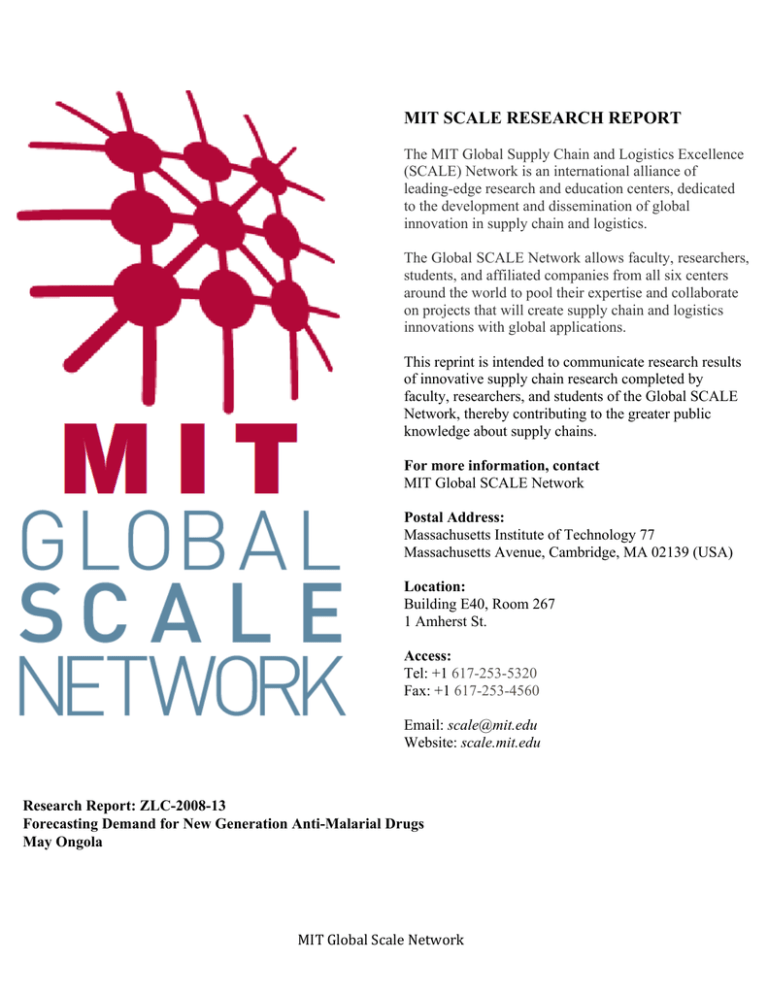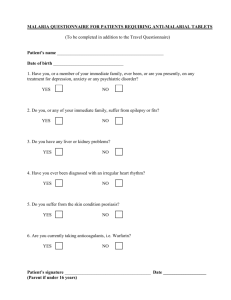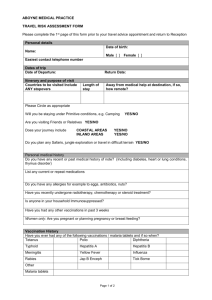MIT SCALE RESEARCH REPORT
advertisement

MIT SCALE RESEARCH REPORT The MIT Global Supply Chain and Logistics Excellence (SCALE) Network is an international alliance of leading-edge research and education centers, dedicated to the development and dissemination of global innovation in supply chain and logistics. The Global SCALE Network allows faculty, researchers, students, and affiliated companies from all six centers around the world to pool their expertise and collaborate on projects that will create supply chain and logistics innovations with global applications. This reprint is intended to communicate research results of innovative supply chain research completed by faculty, researchers, and students of the Global SCALE Network, thereby contributing to the greater public knowledge about supply chains. For more information, contact MIT Global SCALE Network Postal Address: Massachusetts Institute of Technology 77 Massachusetts Avenue, Cambridge, MA 02139 (USA) Location: Building E40, Room 267 1 Amherst St. Access: Tel: +1 617-253-5320 Fax: +1 617-253-4560 Email: scale@mit.edu Website: scale.mit.edu Research Report: ZLC-2008-13 Forecasting Demand for New Generation Anti-Malarial Drugs May Ongola MITGlobalScaleNetwork For Full Thesis Version Please Contact: Marta Romero ZLOG Director Zaragoza Logistics Center (ZLC) Edificio Náyade 5, C/Bari 55 – PLAZA 50197 Zaragoza, SPAIN Email: mromero@zlc.edu.es Telephone: +34 976 077 605 MITGlobalScaleNetwork ________________________________________________________ FORECASTING DEMAND FOR NEW GENERATION ANTI-MALARIAL DRUGS May Ongola EXECUTIVE SUMMARY Forecasting for new generation anti-malarial drugs presents a three-way catch 22 predicament for key supply chain players. Poor countries want to know the price before they can commit to a purchase quantity; manufacturers are hesitant to communicate a price unless they know how many doses will be brought. Likewise, financial donors need estimates of costs and volumes before they can commit funding to these countries. Malaria is ranked ninth among fatal diseases in the world. Over 500 million cases and one million deaths are reported annually. Recent increases in incidences of malaria have caused world-wide alarm. The surge in cases has been partially attributed to increased malaria parasites resistance to traditional low-cost medicines like Chloroquinine (CQ) and Sulfadoxine/Pyrimethamine (SP). New generation drugs like Artemisinin Combination Therapies (ACTs) are now available, and expectations are that these will greatly decelerate current malaria incidence rates. However, multiple challenges have plagued malaria drug forecasting. First of all, unlike other drugs used to treat fatal diseases like cancer, HIV/AIDS, and heart disease, malaria drugs have over-thecounter status (OTC) in many countries. OTC status confers increased drug access, but reduces overall case diagnosis and monitoring. Cases reported to the World Health Organization (WHO) are thus often underestimated, and therefore, not indicative of the true demand. Secondly, aggregate country drug purchases that might be considered proxy sources of information on demand are often unreliable. Parallel imports and information asymmetry between suppliers and demand points (mostly developing countries) create opacity within the chain, and further befuddle demand estimates. Lastly, uncertainty exists on how developing countries will respond to innovative drugs like ACTs, which retail at prices 10 times higher than “perceived” substitutes in the market. The objective of this thesis was to develop a methodology for forecasting demand for new generation drugs. In this study, ACTs were used as surrogates for new generation drugs. Six countries with the highest malaria case burden were selected as samples. These were the Democratic Republic of Congo (DRC), Ethiopia, Nigeria, Ghana, Tanzania and Uganda. These countries contribute to 41% of the global malaria cases attributed to the malaria parasite Plasmodium Falciparum. Three major steps were involved in establishing the baseline demand. These included: Estimating the Population at risk based on Climatic and Geographic Location: Each country was segmented into a high and low risk area. The population residing in each area was then quantified. A second step involved adjusting the population to account for the positive effects of preventative measures like insecticide treated nets and indoor residual spraying. The outcome of this level of analysis was a net population exposed to malaria. Executive Summary, MIT-Zaragoza Master’s Thesis, 2008 Title: Forecasting Demand For New Generation Anti-Malarial Drugs Estimating the Market Size: To estimate the market size, the net population exposed to malaria was further adjusted based on the risk area and age group. “Malaria Country Treatment Guidelines” were used to ensure country compliance to agreed health standards. The last step was segmenting the market into public and private sectors based on usage. Estimating Coverage and Demand Elasticity: Gross domestic product (GDP) was used as the main source for deriving the Government health expenditure (GHE) and the household expenditure on health (private sector). In the private sector, specific emphasis was placed on Out of Pocket Expenditure (OOPs). Coverage was defined as the proportion (%) of treatments demanded that can be procured given a fixed budget. (i) Public Sector Analysis: Using GHE, an assessment was done on how many treatments the governments could afford based on a fixed budget, a fixed price (US$1/-), and a fixed public sector customer size. Based on recent trends it was assumed, that all gaps in the public sector would be bridged through donor funding. (ii) Private Sector Analysis: This involved qualitative and quantitative checks. Willingness to Pay (WTP) and Ability to Pay (ATP) were assessed using total economic value (utility) and reference prices (status-quo effects) in the market. Various price scenarios were modeled, and the number of treatments demanded at each price point was assessed. A baseline demand for treatments for the year 2006, based on 60% coverage of the private sector and 100% coverage for the public sector was then derived. Long-term projections (2007-2015) were made by varying the following parameters: Market Size Changes: It is expected that the market size will decrease in the future. This is because population growth will be counter-balanced by risk reduction in rural areas and increased effectiveness of preventative measures. Rural areas have higher incidence frequency levels. Budgetary Changes: It is expected that budgets for treatment will grow linearly due to GDP growth, and government commitments to a higher allocation of GDP to health expenditure (15%). Population and treatment coverage would therefore increase in both the private and public sectors. These two broad changes had different effects on the private and public sectors due to assumptions on current government negotiated prices, and commitments on coverage. Price was held constant at US$ 1 in the public sector and coverage was maintained at 60% in the private. These projections therefore predict that demand in the public sector will grow due to an increase in the budget for anti-malarial, while the private sector is expected to shrink corresponding to market size changes. Conclusions: Government initiatives to improve access by negotiating fixed prices within the public sector, along with initiatives targeted towards subsidies in the private sector, will lead to an initial increase in demand to match current substitute products in the market. However, long-term market size is expected to decrease from 379 million treatments (2006) to 350 (2015) million treatments, as a result of aggressive preventative measures. Consequently (prices and coverage held constant), actual demand is expected to increase from 217 million treatments to 248 million treatments. Policy Implications: International Financing Organizations, policy makers, country program managers and manufacturers of anti-malarials should lay greater emphasis on gathering precise information on malaria incidence, treatment seeking behavior and effectively utilize this information in a scientific manner to estimate demand for treatments. The future demand for anti-malarials should clearly account for the potential reduction in malaria incidence due to the rapid scale up in prevention efforts. Executive Summary, MIT-Zaragoza Master’s Thesis, 2008



